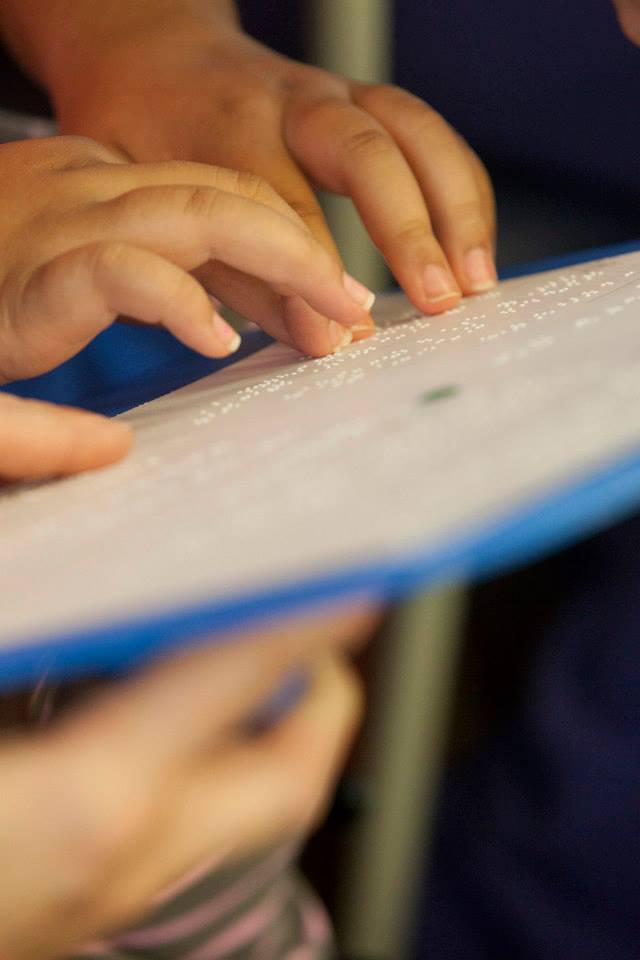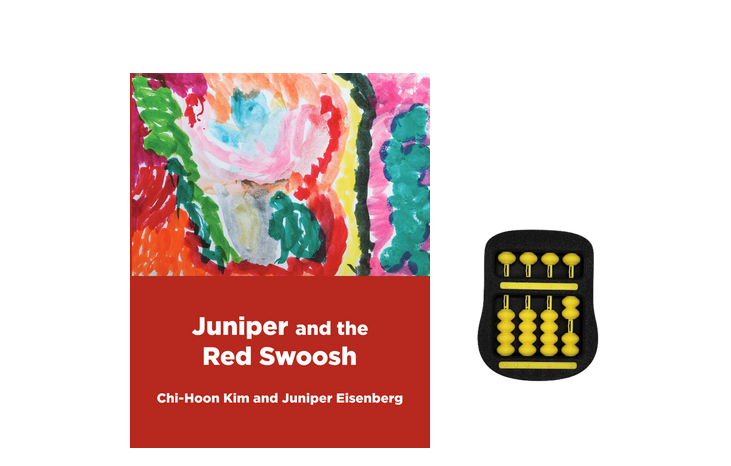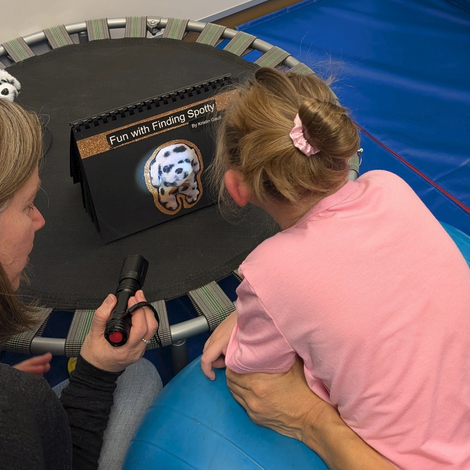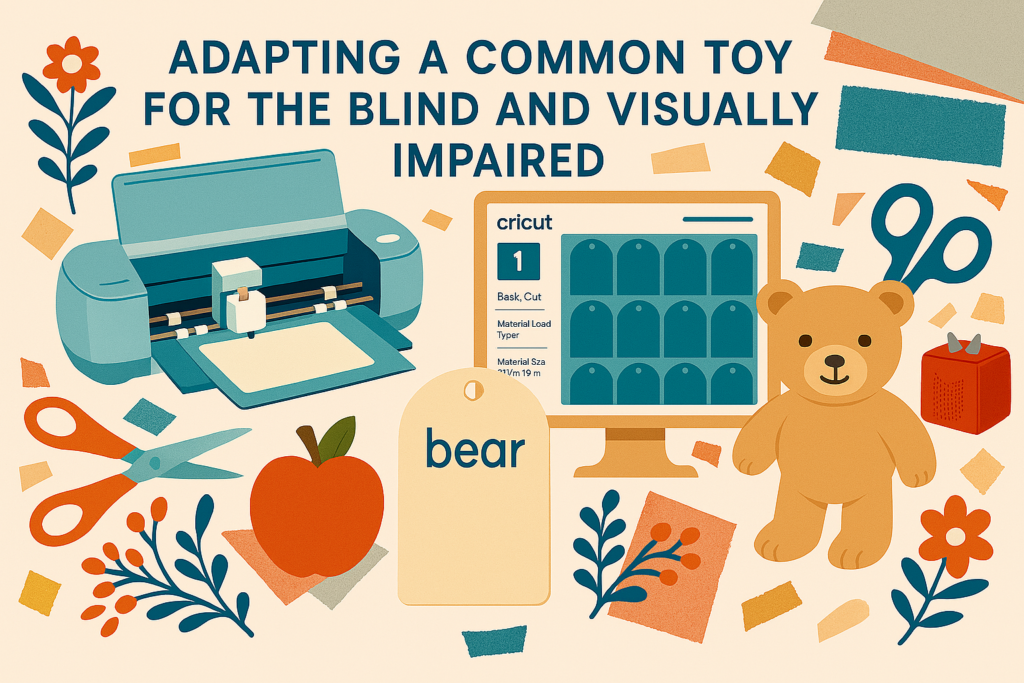I loved teaching tactile skills and braille. It was a giant puzzle for me to discover the student’s learning style and material preferences. One story I want to share that sticks in my memory happened when I had two young students in kindergarten. Once they started learning to read and write the braille alphabet, we would load our braillewriters and race to complete the alphabet. First just a few letters and finally the entire alphabet. The goal was to write the alphabet in 10 seconds. Each student would pass their finished paper to the other one to check for correctness. I was big on kids having goals, and this is one I “helped” them to have. I knew this was a real challenge and I was prepared to “bend” the clock if I detected success was not possible. I might add that I can’t write the alphabet in. Cursive in 10 seconds!!!! However they both were able to do it. Often the other VI teachers and the classroom assistant would join us. I am laughing as I sit here and write recalling the banging, thenoise, and the laughter that occurred. There is need for laughter and happiness in every lesson. Everyone can work hard-working and smart-and still have fun.
The bottom line is that my students taught me so much. I was fortunate to have them.
“Developing Smart Fingers”
When teaching braille to young readers there is a continuum of skills that must be mastered before the actual process of braille reading begins. It is important at the beginning of instruction to find proven program(s) that introduce the skills in a sequential manner, like the Oregon Project. TVIs have too many skills, subjects and lessons to cover without creating more work by developing your own program. However, that is not to say that you can’t add or modify a program to fit a student’s learning style. Typically, it is best to use a variety of programs and materials. Occassionally you might even discover old out of adoption series lying around which contain good ideas. If possible, it is also wise to find a fluent braille reader and observe their reading skills and ask questions about how they learned and what skills they use the most. Also find out what skills they wish they still had an opportunity to learn.
Develop Your Own Tactile Skills
Most teachers are not visually impaired and have not developed their tactile skills. Therefore, they have to dig deep to create tactile awareness as a teacher. Take the time to start “feeling” everything that comes along. In many ways, you will be functioning at the same tactile level as a young student, only your touch will be influenced by your vision and knowledge. Be a keen observer during instruction time to make sure the lesson is mastered and overteach each skill. Compare developing tactile skills to learning to walk. How many times does a baby fall before he has mastered walking. That is why it is critical to have the entire teaching team, including parents, aware of teaching tactile skills. Consistency is critical. Everyone needs to use the same words, same approach, same program in every lesson.
Reinforce Tactile Skills in the Natural Environment
While traveling to a lesson area with young students, introduce textures in and around the area, including the texture/ color/design of clothing. This provides an opprotunity to teach “touching” in a variety of places. Insert common information facts about building materials, bulletin boards, and clothing, (i.e. corduroy or wool for cooler days, light weight fabrics for warm weather (bathing suits are worn during what months?). This is also a time to insert questions about days of the week, months of the year, number of days until the weekend, number of days until a special holiday, weeks left in the season, etc. Maximize every teaching moment and follow up by showing calendars. Expand the conversation to weave a web of information and repeat the senarios each lesson. This can also be a time to talk about the upcoming lesson, demonstrate new vocabulary, introduce a concept, etc..
Materials to have on hand while teaching braille:
APH (American Printing House for the Blind)
- On the Way to Literacy
- Building on Patterns
- Peg slate, (used this daily-students named it Peggy Slate!!!)
- Big cell, swing cell, pop a cell, stickers, textured paper collection, raised line paper, Braille writer
LS&S
- Tactile Alphabet book, Raised line coloring book, Alphabet Braille blocks, scented markers,, orange tactile writing liquid, bingo card
Maxi Aides
- Raised line coloring book, bingo cards, alphabet blocks, Hi Ho Cherry-O, Alphabet Bingo game, braille jigsaw puzzle
- Amazing mazes book, Childrens Alphabet book, Q is for Quack book; Please note that I have not used these books so I’m not sure how appropriate they are. I have learned that often materials are made /adapted for braille users and these items may “look” great. However, they may NOT be good tactile materials, especially for young students.)
Other Materials:
- Crayons and pencils
- Finger grips (students need to learn to use a pincer grasp) OTs usually supply these but you may have to shop for a variety of styles before you find one that works for your student.
- Egg carton cut in half resuling-six compartments (glue it to foam board for stability)
- Child’s muffin tin with six depressions
- Tracing wheel-used is sewing from craft department or sewing store. Give classroom teachers one of these in case a material needs to be adapted quickly
- A variety of sets of various shapes and textures-six buttons, six wooden Coke bottles, six state of Texas shapes, six dimes, six pennies, six pom poms, etc. (craft stores or stores that sell natural wood projects should have wooden pieces)
- Glue, scissors, clay, keyboards, pecan crackers, hole punches, 1 lb. weights,
People who can help
- Local quilting group: These people are great at making quilts with various textures. (Really fun for little ones.) See Tactile Baby Blankets.
- High school honor students: They need service hours so they can make tactile materials for students when given direction and materials.
- Boy Scout Eagle project: Making a cabinet for braille books
- Dollar Stores: Have avariety of simple games and flash cards easily adaptable using slate and stylus, stickers.
Programs
- Oregon Project
- Mangold Basic Braille Program Kit
- PREP- Preparatory Reading Program for Visually Handicapped Children, units VI-X 1978 (It is really old, but some districts may have it. )
Other sources:
- Pinterest: Search for tactile materials, programs
- Thesensoryspectrum.com website, search for The Ultimate Guide to Sensory Toys, as well as other topics.
- Occupational Therapy and Sensory Integration for Visual Impairment




